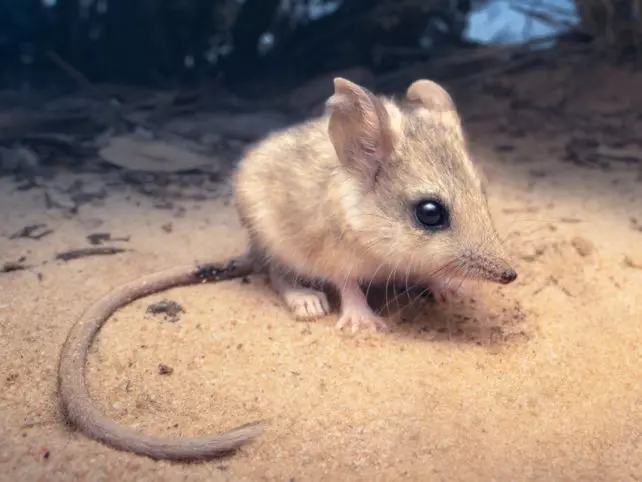Living in an arid region is a challenge. Harsh conditions make it tough for plants to grow, making every shoot and leaf precious, even in death and decay.
A fascinating study conducted at Boolcoomatta Station Reserve in outback South Australia has shed light on the importance of vegetative leftovers in fueling a desert ecosystem. It has also uncovered an unexpected alliance between termites and dingoes.
In arid ecosystems, research often focuses on the green food webs that follow 'boom periods' brought about by rainfall events. These periods see rapid growth of desert plants and an increase in the populations of animal species that feed on the growth. However, drier periods, which dominate life in arid environments, have received less attention.
 A small gecko, Rhynchoedura, that mostly relies on the detritovore-eating termites for food. (Mike Letnic)
A small gecko, Rhynchoedura, that mostly relies on the detritovore-eating termites for food. (Mike Letnic)
Researchers at UNSW conducted a study comparing control plots with fenced enclosures, where large herbivores like kangaroos and goats were kept out. They discovered the impact of these herbivores on brown food webs.
Brown food webs rely on decaying vegetation as their primary food source. This rotting plant tissue serves as food energy for the rest of the web when consumed by detritivores like termites and worms, which are in turn food for small vertebrates.
While brown webs exist in most habitats, their impact is more pronounced in areas with fewer resources, such as drylands and deserts.
The study found that plots exposed to overpopulated kangaroos and feral goats showed reduced amounts of decaying plant material and living vegetation. This disruption caused a cascade of effects throughout the entire web.
 A threatened sandhill dunnart (Sminthopsis psammophila). (Kristian Bell/Moment/Getty Images)
A threatened sandhill dunnart (Sminthopsis psammophila). (Kristian Bell/Moment/Getty Images)
Fewer termites, the main decomposers in arid ecosystems, resulted in a reduction in the number of lizards and small mammals that feed on termites. This, in turn, affected the food supply for larger animals such as eagles and snakes.
Contrary to studies in more fertile regions, where increased herbivory enhances the brown food web, in the desert, excessive herbivory leads to a lack of leftover plant material. This scarcity affects the small scurrying lizards and mammals like dunnarts, which rely on detritivores for food.
The overpopulation of kangaroos in arid Australia is a known issue, caused partly by the absence of an apex predator: the dingo. Dingoes were eradicated from much of the arid landscape to protect grazing sheep, leading to unintended consequences.
The study area at Boolcoomatta Station Reserve has so few dingoes that they're considered 'functionally extinct'. Removing dingoes from the landscape has driven native grasslands to give way to woody shrublands, allowing feral cats and foxes to prey on endangered marsupials unchecked.
While more research is needed to confirm the results, these findings add to the growing understanding of the interdependence of different species within ecosystems, even seemingly unrelated ones like dingoes and termites.
The study highlights the importance of preserving the delicate balance of desert ecosystems and the critical role of apex predators in maintaining biodiversity.
This research was published in Ecosystems.

















